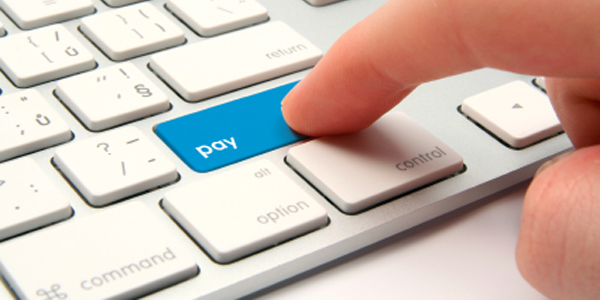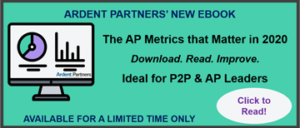[Editor’s Note: Click to read Part 1 and Part 2 of this series]
In Ardent Partners’ AP Metrics that Matter in 2020, our research indicated 55% of B2B payments were made electronically last year. The positive lining here is the percentage of B2B payments made electronically has been creeping up slowly over the last decade. Unfortunately, besides inertia, there is little sound business reason for North American businesses not to be paying almost 100% of all business payments electronically. It is estimated that nearly 16 billion B2B payments were made by paper check in North America in 2019. Let that sink in for a moment, 16 billion! And of course, paper checks need to be mailed out to suppliers which means 16 billion envelopes need to be used. If we look at this from an environmental perspective (Earth Day was April 22nd) for a moment, we are talking about 32 billion instruments of paper (checks and envelopes) plus all of the fossil fuel needed to transport and deliver the B2B payments, not to mention the tons and tons and tons of carbon emissions pollution generated delivering these 16 billion paper checks. It is mind boggling when you actually think about it in these terms.
Recent events have also shown us the challenges and dangers of relying on paper checks for B2B payments. Thousands and thousands of businesses relying on paper checks were left to develop contingency plans overnight in order to maintain business continuity, not to mention their supply chain. When you and your employees are all working remotely, how do payment runs get approved, checks printed, signed, and mailed? On the flip side of the coin from an Accounts Receivable perspective, were are payments being sent? To offices that have been shut down? And once the paper checks have been collected, how do they get deposited into bank accounts? Accounts Payable’s (and Accounts Receivable’s for that matter) reliance on paper B2B payments have left them exposed in many areas.
Last Chance to Download the AP Metrics that Matter in 2020 eBook
In other parts of the world, such as European Union, paper checks are a thing of the past and have almost vanished entirely. Additionally, suppliers expect to be paid electronically. In North America we to undertake an aggressive strategy to ensure a significant migration to ePayments. Not only are there cost benefits associated with ePayments, AP can also drastically improve controls, accuracy, and access to data by paying electronically. With all the different forms of ePayments that are available, taking a portfolio approach that utilizes the right form of payment for the right supplier or spend category has become an industry best practice. Optimizing the various forms of payments has the potential to deliver more efficiency, higher savings, and better relationships with suppliers.
While credit remains at historically low rates, I expect getting access to funds will be much more difficult for many businesses in the months that lay ahead. In general, credit markets are expected to be far more volatile in the decade ahead than the previous one. Automating the B2B payment process and opening the door to cash management decisions is one safeguard that AP and businesses can take against credit volatility. Organizations of all sizes must begin developing better payment strategies. AP is the first line of defense when it comes to supplier invoices, and, as such, they are the best unit to understand the implications of payment methods (from ACH to commercial card, wire transfer, etc.) and timing. Combined with insights into early payment discounts, AP can package and provide this information to help develop an enhanced organizational payment strategy that not only takes into account supplier preferences, but also the value that can be derived from being proactive with respect to managing cash flow and making payment decisions (pay early, pay on time, pay late, take earned discounts, generate rebates, etc.) based on the needs of the greater organization.
Digital B2B payment technology is readily available to organizations of all sizes from the smallest to the largest. ePayables solution providers (Bottomline Technologies, Paymerang, MineralTree, Tipalti, Tradeshift) are skilled at helping organizations transition off of their reliance on paper checks and move to 100% electronic payments. Inertia, and love of paper, may have been preventing organizations from moving to electronic payments but the business benefit, environmental benefit, and wisdom of going digital never made more sense than it does right now.


